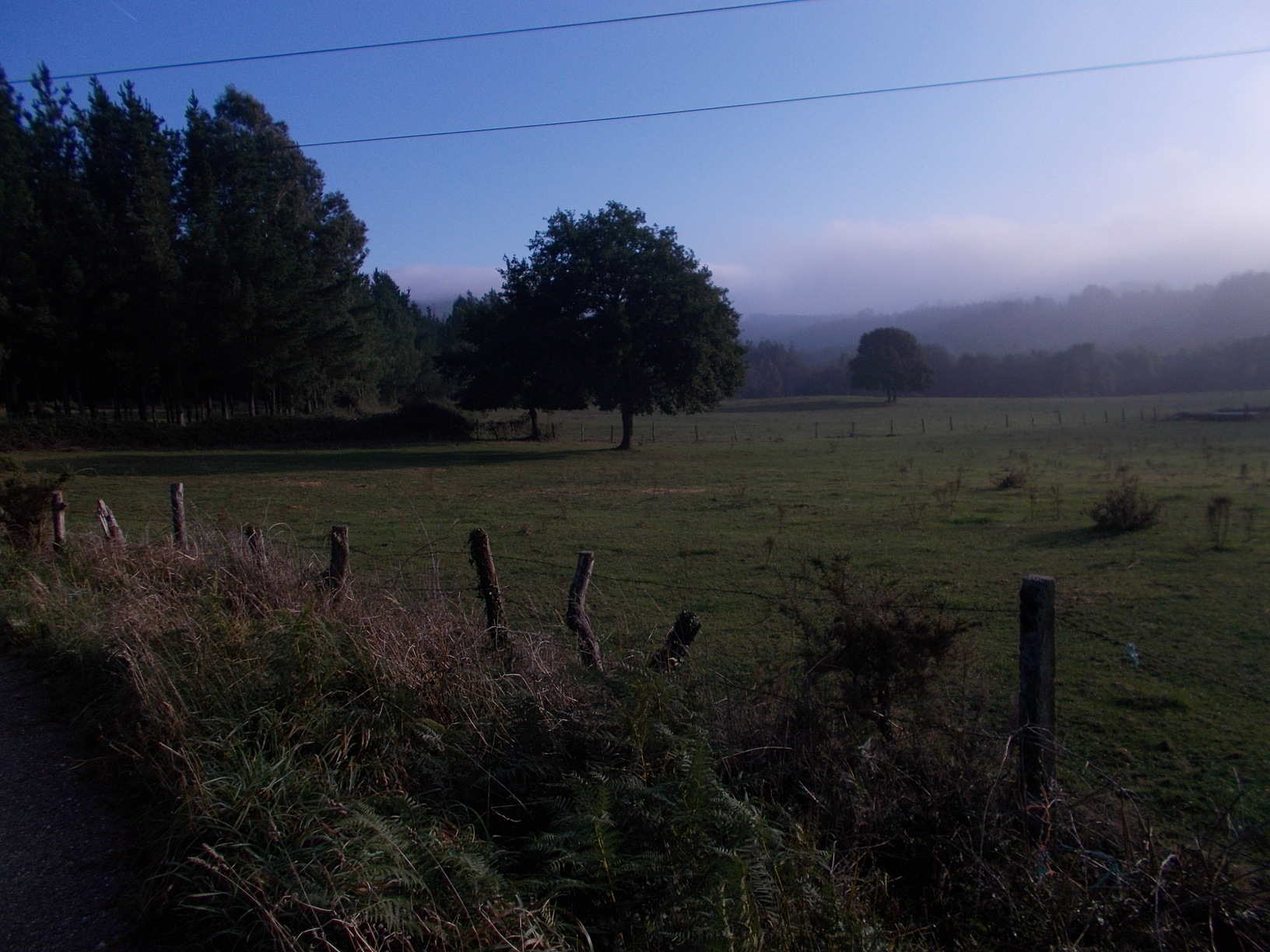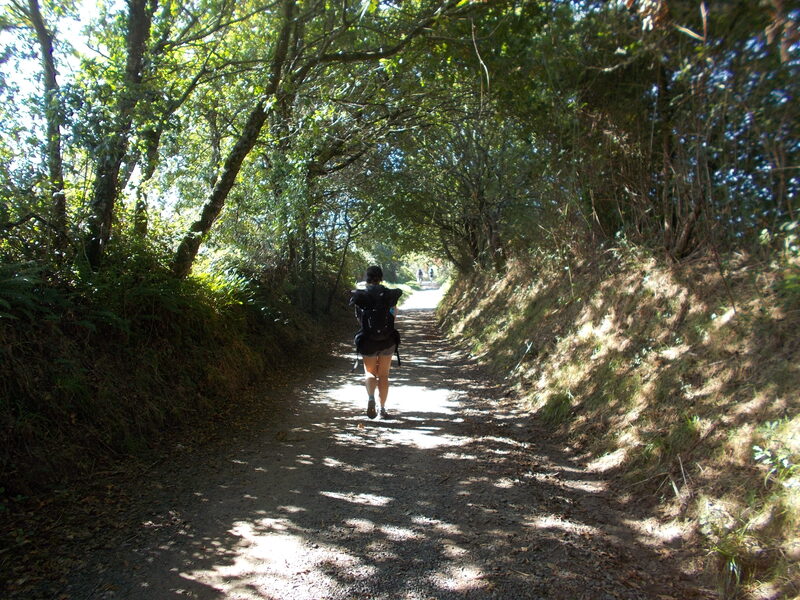
Basic Details
- Starting point: The city center of Colombres.
- Ending point: The city center of Llanes.
- Availability of alternative routes: Yes, and in this case, the alternative route is actually the route most pilgrims take. The coastal route is only 2 kilometers longer than the typical route, adds little extra elevation, and is infinitely more beautiful than the original route that follows the national road N-634 to Llanes. Hence in this article, we will actually describe the alternative route, but providing data such as GPS and elevation charts for both routes (the N-634 road variant–the “official camino”, and the coastal route–the one most pilgrims take).
- Distance: Official camino route: 23 km (download GPS here). Recommended coastal route: 25 km (download GPS here).
- Elevation difference: Official Camino route: + 219m, -324m, Recommended coastal variant: +462m, -568m
- Link to online map: Official camino route: here. Recommended coastal variant: here.
- Difficulty score: Official camino route: 2/5. Coastal variant: 3/5.
- Beauty score: Official camino route: 2/5. Coastal variant: 5/5.
- Terrain/asphalt: Official camino route: 10%/90%. Recommended coastal variant: 60%/40%.
- Next stage: Camino del Norte, stage no. 15, Llanes – Ribadesea.
- Previous stage: Camino del Norte, stage no. 13, Comillas – Colombres.
- Alternative circuit: Colombres – Pimiango – Colombres (or Pendueles).
Elevation profiles for the routes
 – Recommended coastal variant. As you can see except of the last big climb before Llanes, the stage is mostly flat. Sometimes a little climb up, another time a little climb down, but no drastic gradient for either climbing or descending, or anything else that won’t let you enjoy this beautiful coastal walk.
– Recommended coastal variant. As you can see except of the last big climb before Llanes, the stage is mostly flat. Sometimes a little climb up, another time a little climb down, but no drastic gradient for either climbing or descending, or anything else that won’t let you enjoy this beautiful coastal walk.
 – Official Camino route, following mostly the N-634 national road. Very easy walk with no significant climbs all day. However, there’s isn’t much to see either, and that’s why people opt for a coastal variant, unless the weather is highly unfavorable. In such a case many pilgrims cling to the road variant.
– Official Camino route, following mostly the N-634 national road. Very easy walk with no significant climbs all day. However, there’s isn’t much to see either, and that’s why people opt for a coastal variant, unless the weather is highly unfavorable. In such a case many pilgrims cling to the road variant.
Advanced info about the stage
- Trail marking: Generally the trail marking is great here, especially once you are on the coastal route after the village of Buelna. On this route, on any important crossroads, you will see wooden pointers with “Senda Llanes“, because from Buelna the coastal variant of the camino coincides with European long distance path E9, and these marks are here mostly for the E9. There will be other pointers, but as long as you follow those arrows pointing to Llanes, you will follow the right route, and reach your destination. The only problematic part is the coastal part between La Franca and Buelna. Here the marking is rather sparse, and trails are often plentiful and overgrown. But as long as you stick to the coast and see the sea always on your right, you’re walking in the right direction.
- Alternative route info: The alternative route is the one most pilgrims take, and I sincerely believe that in newer camino guides, they will mark this one as “official camino”, and the road variant will be labeled as alternative. Anyway, the coastal route is 100% worth taking, since it neither prolongs the trail too much, nor makes it noticeably more difficult. It passes over single trails and later mostly wide gravel roads, close to the Atlantic coast, with views of the sea on one side, and the mountain range “Sierra de Cuera” on the other side. The hills are not steep (except of the last one before Llanes), and overall many people mark it as one of the nicest parts of the Camino. If you are on bike, I recommend you following the official “road” variant until Buelna, and just then move to the coastal variant, since the coastal patch between La Franca and Buelna is rather tricky for bikes (it is totally okay for walkers though).
- Natural places worth seeing: Lot to see at this stage.
- At kilometer 6, you can make a small detour to a natural phenomenon, the inland sandy beach called Playa de Cobijero. Imagine sandy beach inland, surrounded by cliffs and rock pool that fills with sea water in high tide. And that’s exactly it, always well protected from the wind, and never too touristic, since the access is difficult for most “tourists”. But for pilgrims it is perfectly all right, and just 100 meters detour from the Camino, well sign-posted. There are also two beautiful caves around as well, here, and here. Both are accessible and have nice stalagmites and stalactites inside. You just need a good headlamp to be able to explore them.
- At kilometer 7, you will pass through a marvelous little beach with caves and a big rock just in front of you, seemingly in the middle of the ocean. It’s called Playa de Buelna. This beach is nudist-friendly, and once the main tourist season on the northern coast of Spain ends (from mid-September), most people sun-bathing here are nudists. However, it is just nudist-friendly and not exclusively nudist, meaning you can go there with your clothes on. Camino passes right next to this beach, and while it gets crowded on some days, a pilgrim who starts early from Colombres and reaches Buelna at 9am can enjoy this exclusive beach in privacy (Spanish people or tourists in general won’t arrive before 10am).
- At kilometer 15, you will pass by the “Bufones de Arenillas“, which for many people is the highlight of this stage. Needless to say, the full magic of the bufones (water striking with force from the ground to over 10 meter height) can be seen only in rainy and windy weather. But the bufones still have their magic, even if only a bit of water reaches the ground, or if you can only hear their mysterious sound, the calling of the sirens :). We’ve made a video with a drone in the location, on a sunny day. And while you won’t see water striking high on this occasion, I am sure you’ll still agree it is a locality worth visiting:
- Historical, architectural, and culinary places worth seeing: In terms of history and architecture, the most interesting places are the starting place of today’s walk, Colombres (check the description of previous stage to learn what to visit there), and the ending point, Llanes. Llanes has a really nice port, and a historical center worth seeing. The only problem with Llanes is that the city got super-touristic in the last decade, and since the main promenade at the port and the center is rather small, the streets are simply over-crowded in summer, which kind of spoils the experience of walking there. But for one afternoon it is okay. Llanes is one of those cities that you can love as a tourist or pilgrim (staying for one day), but would hate living there. That sort of sums it up for me, but from historical and architectural point of view it is the highlight of today’s walk.
- Camping/bivouac options on this stage: Decent stage for campers. Basically from Pendueles onward, you will always find some spot to pitch a tent on the coast, or close to it. Many small side roads, some protected with trees, not as much “private property” signs as it is typically the case in Spain. If I should pick one location for wild camping however, I’d pick the zone close to the beach of Andrin, with a beautiful viewpoint for watching the sunset, called Mirador de la Boriza. In the zone you will find many small trails, view points, trees, parking places for caravans, and generally in the evening there’s almost nobody around, except of the viewpoint for sunset. Anyway, in this location you will no doubt find a good spot for pitching your tent, and it is close to Llanes as well, so you have covered almost the entire stage. When it comes to organized camping places, you have several options, and I recommend the following two:
- Camping La Paz: On kilometer 12 of today’s walk, right on the camino. Super quiet location, private access to the beach, lot of trees, facilities old but decently clean. A really nice camping indeed. Dogs are not allowed though, so that’s something to take into consideration. Price quite high for pilgrims.
- Camping Las Conchas: 3 km after Llanes, but right on the Camino. Dog friendly, outside of the hassle of the big city, with a nice beach of Poo within 5 minutes walking distance. Reasonable price considering the location and everything. Facilities OK.
- Dog friendly score: 4/5, the coastal variant. A nice stage for dogs indeed. The terrain they will enjoy walking on, and you pass through villages and shady spots often enough to be able to get water for your beloved companion (and for yourself), and to relax in the shade. I do not give 5/5 only because there isn’t a single one dog-friendly accommodation option in Llanes. Hence you will have to camp or walk further on to find a place where they accept dogs.
- Special remarks: There are two amazing beaches in the proximity of this stage, both of them worth a detour, especially if you have enough time, and the weather is nice. One of them is La France, a huge natural beach with caves and everything. Seeing it when the tide is low, many people label it as one of the most beautiful, if not the most beautiful, beach of the entire northern coast of Spain. There are bars and restaurants on side, and since the sandy area is as big as it gets, even in the height of the season you can find spots with decent level of privacy. The second beach is the beach of Andrin, again located in amazing natural surroundings, with a bar with great views just above the beach, and a true holiday vibe :). It isn’t easy to access this beach by car, which demotivates many tourists, and hence it isn’t as crowded as many other beaches in the zone of Llanes, beaches that aren’t half as beautiful as the beach of Andrin, yet four times more crowded… Both of these beaches require about 1 km detour, but I guarantee you won’t be disappointed visiting them…
Accommodation options on today’s stage
* The infographic displays the number of pilgrim hostels (only pilgrims allowed), hostels (anyone allowed, shared rooms), and other accommodation options (hotels, pensions, etc, private rooms) in each point along the route, together with price range. For exact explanation of the pictograms we use check the explanations page. Below the infographic you will see our recommended picks (up to 3 pilgrim options and 1-2 “privacy” options, maximum five) for the stage, together with important information (but not too much info, just what you need :-)).

Recommended places to sleep along this stage
Pilgrim options:
- Albergue Triskel, La Franca (km 3). Location and reviews on Google maps here. 12 beds, price 18 euro. Great reviews on different platforms, friendly hosts. Check in from 3pm to 9pm. Definitely a great place to stay when you cannot get a bed in Colombres. One of the nicest beaches in the zone (La Franca) 1.5 km from the hostel (good distance for an afternoon stroll). Recommended way of making a reservation: phone call, +34 680 924 914.
- Albergue Aves de Paso, Pendueles (km 10). Location and reviews on Google maps here. 14 beds, donation based, great reviews on all pilgrim platforms. Very friendly hosts from Holland & Belgium (a couple). Check-in from 3pm. It is recommended making a reservation in advance, ideally by phone call or WhatsApp, +34 676 620 094.
- Albergue La Estación, Llanes (km 24). 34 beds, prices start at 17 euro/bed. Location and reviews on Google maps here. A hostel with a good reputation overall, they accept any guests, but outside of July and August 90% of guests are pilgrims. Definitely the best pilgrim option in Llanes, where in overall hotels aren’t particularly good to say the least… Recommended way of making a reservation: booking.com, or phone number +34 985 401 458.
Privacy/luxury options:
- Hotel Montemar, Llanes (km 24). One of the few good hotels in Llanes, actually probably the best one in terms of price/quality ratio. Location and reviews on Google maps here. Great staff (they speak English), prices from 60 euro/night (in lower season, can get easily up to 100 euro/night in summer), and overall great reputation across all platforms. Check-in from 4pm. Recommended way of making a reservation: booking.com.
Pictures from the stage
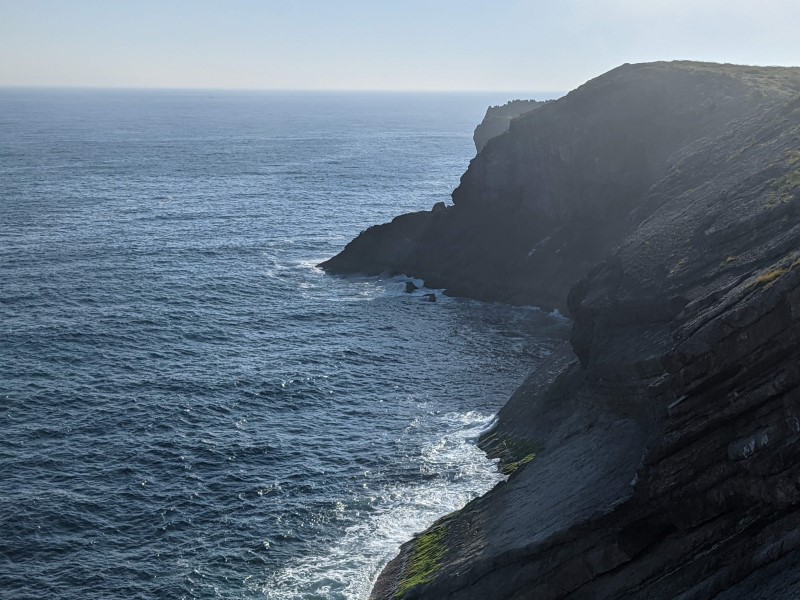 – Rock formation called “El Paredon”. Another work of art of sea and winds and tens of thousands of years passing that you can marvel at on your Camino. This one is located just 1 kilometer after the split of “official” camino and the recommended coastal variant.
– Rock formation called “El Paredon”. Another work of art of sea and winds and tens of thousands of years passing that you can marvel at on your Camino. This one is located just 1 kilometer after the split of “official” camino and the recommended coastal variant.
 – “Bufones”, the holes where nature plays its theater, and either air, or water shoots up from the ground. On a sunny day like this one it is typically only air, but the sounds are breath-taking nevertheless.
– “Bufones”, the holes where nature plays its theater, and either air, or water shoots up from the ground. On a sunny day like this one it is typically only air, but the sounds are breath-taking nevertheless.
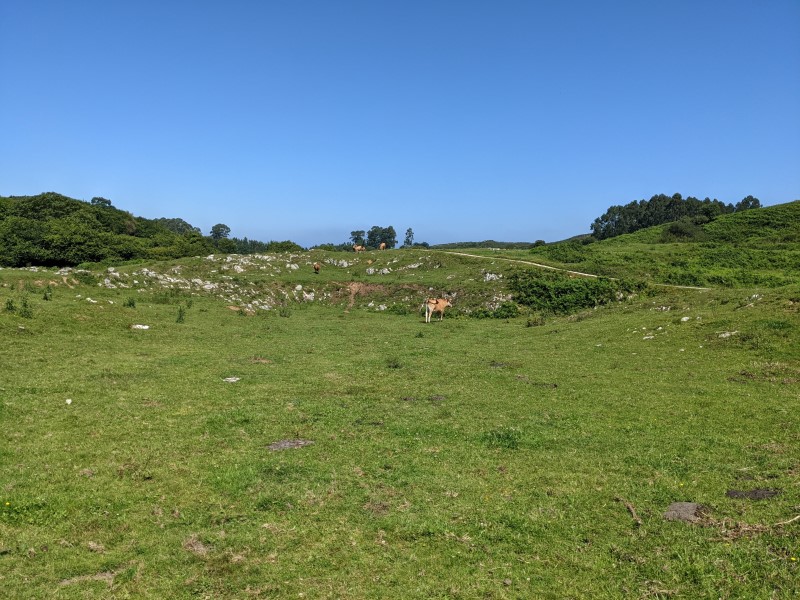 – Cows and goats, always present on this part of the coast, do not care much about the pilgrims (and they won’t disturb you in any way). They just enjoy the grass and perhaps listen to the magical sounds of the bufones as well :).
– Cows and goats, always present on this part of the coast, do not care much about the pilgrims (and they won’t disturb you in any way). They just enjoy the grass and perhaps listen to the magical sounds of the bufones as well :).
test

– For the majority of today’s walk, the trail you will walk on is a relatively wide gravel road. On some patches, however, you can enjoy a beautiful single-tracks just like this one…
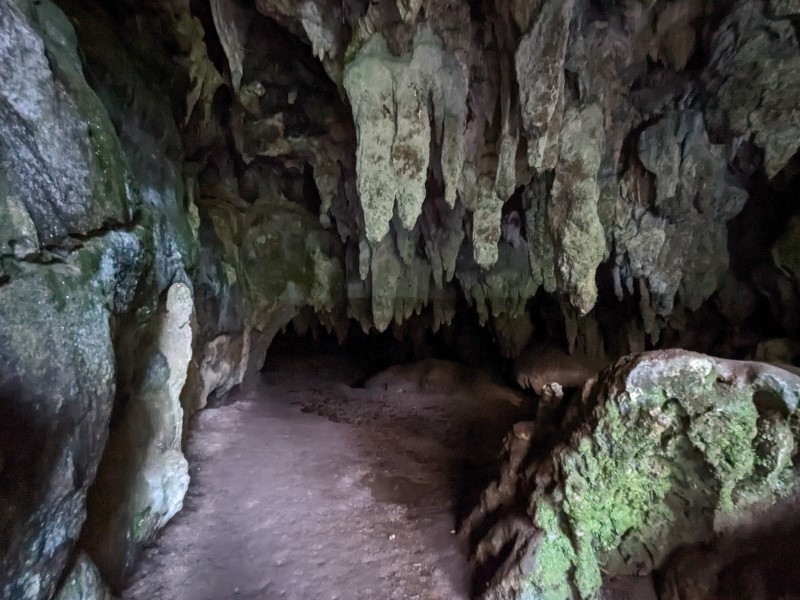 – The Cave “Cueva de las Raices”, one of the two caves close to the beach of Cobijeru. As you can see on the picture, it is definitely worth going in :).
– The Cave “Cueva de las Raices”, one of the two caves close to the beach of Cobijeru. As you can see on the picture, it is definitely worth going in :).

– The beach of Cobijero, an inland beach with sea water, one of the marvels of this part of Spain… I took the picture in the off season, hence you cannot see any poeple around.
Few tips at the end
- If you happen to walk this stage in rainy weather, you aren’t actually that unlucky. Because the bufones, the biggest natural attraction of the location, and a reason why many tourists go here as well, show their full magic in rainy, windy weather. That’s exactly when you can observe gallons of water striking from the ground to the air, sometimes as high as 15 meters. It is a spectacle one will remember for lifetime. Hence if you have a good poncho or rain gear in general, I suggest you to follow the coastal variant, especially from Pendueles onward, even if it rains.
- A mention to bikers: On bike, I recommend avoiding the first detour to the coast, the one between La Franca and Buelna. Not that the terrain is super tricky for bikes, but there are several fences with very small gates to pass for pilgrims, and these are impassable with bike. You need to lift it and pass it to the other side, which can be extremely tricky with luggage and everything. But from Buelna onward, you can and should follow the coastal variant on bike, since this is a wide gravel road and perfectly fine for any mountain bike or even for gravel bike. the beauty you will see here is definitely worth the bit of extra effort. If you do not want to miss the caves and beach of Cobijeru, go to Buelna first on the road, and visit this place from there.
- When it comes to the situation in Llanes (the ending point of this stage), the situation with the albergues changes a lot depending on the season of the year. Since the city is very busy in summer, in July and August your best bet is the alberue Casona del Peregrino, which is the only place in town where only pilgrims with a credential can stay. The other two hostels in town are always super crowded in summer months. However, once the summer ends (or before it begins), I recommend La Estacion instead. It simply has better facilities and the installations are newer.
Next/Previous Stage
- Next stage: Camino del Norte, stage no. 15, Llanes – Ribadesea.
- Previous stage: Camino del Norte, stage no. 13, Comillas – Colombres.
- Alternative circuit: Colombres – Pimiango – Colombres (or Pendueles).
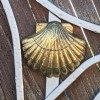



![Ultralight Packing List for Camino de Santiago [2025 Edition]](https://caminolovers.com/wp-content/uploads/2022/03/altra-shoes-640-x-480.jpg)

